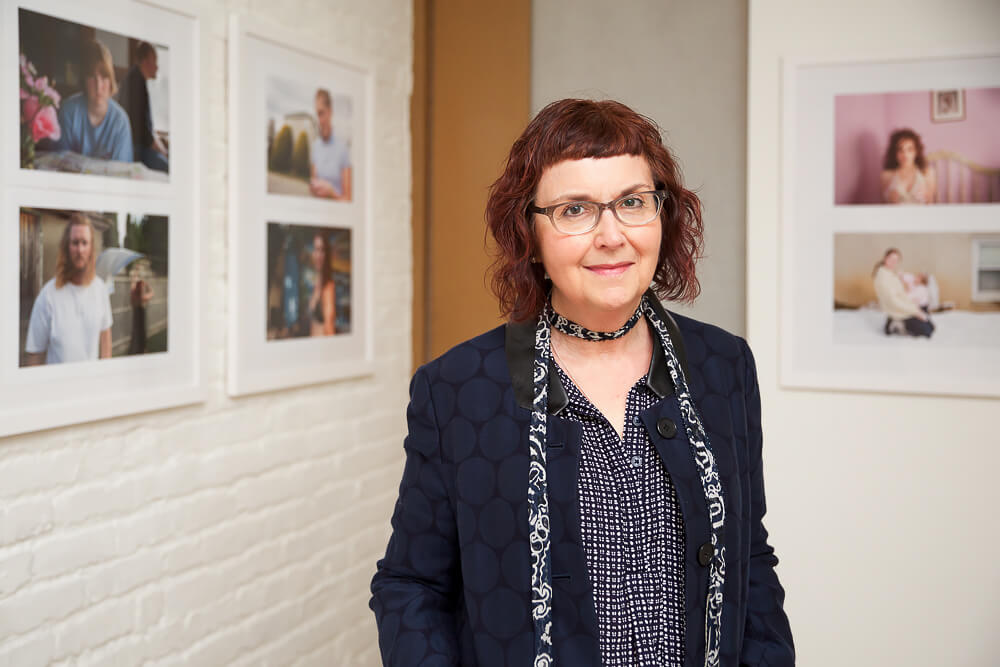Debbie Miracolo is a photo-based artist interested in transition and passage of time. A former graphic designer with a fine art education, she creates inventive images with a sharp attention to detail and composition, often with a generous sprinkling of emotion and whimsy. She attributes her outlook to memories of an introverted childhood infused with make-believe worlds and storybooks. By transforming rather than documenting truth, her interpretations of humanity, nature, and train travel serve as seductive invitations to linger, question, and weave a story of one's own.
Growing up as an only child in a home with her European parents and grandmother made her childhood reality different from that of her friends. She was introverted, shy, and intimidated by the world around her, but found that creating art alleviated some of the loneliness she felt and helped her to express her feelings. By the time she finished high school she had become skilled at drawing and painting.
At Rochester Institute of Technology she earned a BFA, studying printmaking, photography, and art history, and later moved to New York City to pursue her artistic dreams. There she began a 15-year career as a graphic designer in the busy publishing and advertising industries. With the birth of her two sons and subsequent move to a Victorian house in a suburban New York town, she shifted all of her energy, diving into motherhood, and for several years the creative spirit within her lay patiently dormant. As most artists know however, that spirit never truly leaves, and as her children approached adolescence she could sense it regaining strength. Feeling drawn to photography once again, Debbie made the decision to revisit the medium as an art form. She began taking classes and workshops at the
International Center of Photography, gaining mastery of the craft and honing her own personal vision. From there, there was no turning back, and she has been making and focusing on her art ever since.
Debbie's work has been published, notably on the cover of
Geo Wissen Magazine and most recently, in
F-Stop Magazine. Her images have been exhibited in a number of galleries in New York City, Boston, St. Petersburg, Fl. and Middlebury, Vt. as well as online media.
About Imagined Moments from the Porch
"It was a bewildering, absurd world I found myself in during the first chaotic months of the Covid-19 outbreak. Through incongruous juxtapositions, metaphor and a bit of whimsy, these photo composites of my neighbors portray the surreal, confused and off-kilter feeling I had then, and which still lingers today.
With many of us sheltering in place, pedestrian traffic had increased remarkably in my quiet town. People paraded by on the street, some of whom I'd never seen before; young and old, parents with children, and more and more dogs as the weeks went by. I began to photograph what I observed from the steps of my front porch and, over a period of four spring and summer months, the project evolved.
The idea to reconstruct the photographs came to me when I needed to switch out a person, and with that one manipulation, it became clear that I would take the series in a more imaginative direction. As the virus numbers increased and the news became more alarming by the day, I digitally rearranged my characters in more unlikely ways. It was as if my wish to change reality and my doubts about what to believe were coming through in my images.
Imagined Moments from the Porch is a kind of theatrical narrative made up of fictional scenes I compose to depict my off-beat version of these dark, confusing, and upside-down days." --
Debbie Miracolo